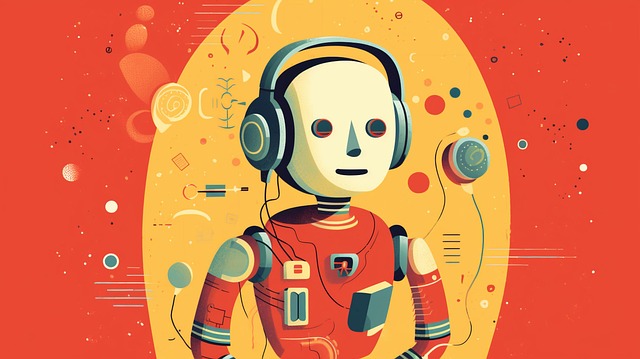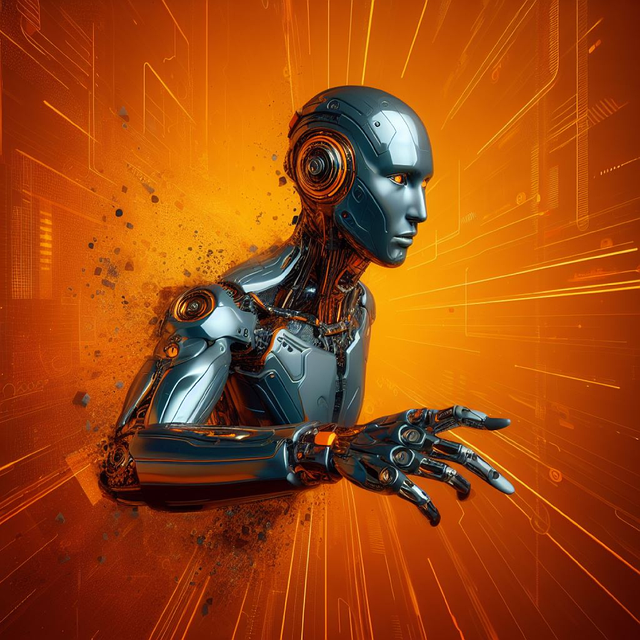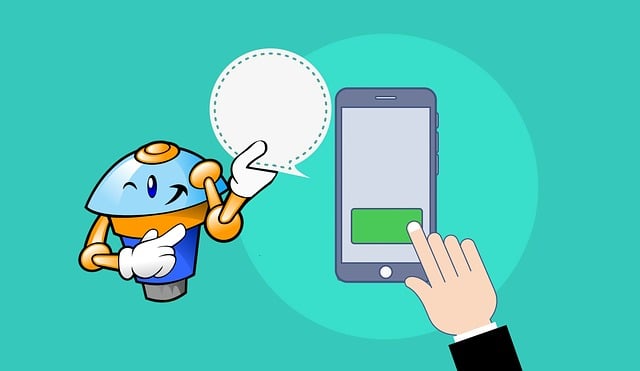AI chatbots are reshaping workplaces by boosting productivity through advanced NLP and machine learning. They automate tasks, provide quick information access, and offer personalized support, freeing up employees' time for more demanding work. In today's digital age, integrating AI chatbots into workflows is a game-changer, streamlining tasks, saving time, and reducing errors. These tools enhance collaboration by consolidating messages, setting reminders, and organizing meetings, fostering a dynamic and interconnected workplace. Success is measured through qualitative and quantitative assessments, ensuring AI assistants align with business objectives and contribute to overall efficiency.
In today’s digital era, AI assistants are revolutionizing workplace productivity. This article explores the transformative power of AI chatbots, delving into their inner workings and the myriad benefits they offer. From enhancing daily workflows to boosting team collaboration and communication, these intelligent tools are reshaping how we work. Learn how to integrate AI assistants effectively and discover measurable ways to assess their contribution to your organization’s productivity.
- Understanding AI Chatbots: How They Work and Their Benefits
- Integrating AI Assistants into Daily Workflows
- The Impact on Team Collaboration and Communication
- Measuring Success: Evaluating AI's Contribution to Productivity
Understanding AI Chatbots: How They Work and Their Benefits

AI chatbots are revolutionizing the way we interact with technology in the workplace, offering unprecedented efficiency gains and transforming traditional productivity landscapes. These intelligent agents leverage advanced natural language processing (NLP) and machine learning algorithms to understand and respond to user queries, making them highly adaptable tools for various professional needs.
At their core, AI chatbots process and interpret human language, allowing for free-flowing conversations. They learn from these interactions, continuously improving their performance. By automating routine tasks, providing quick access to information, and offering personalized assistance, these chatbots enhance workflow efficiency. Whether it’s answering frequently asked questions, scheduling meetings, or managing project tasks, AI chatbots streamline operations, enabling employees to focus on more complex, creative endeavors.
Integrating AI Assistants into Daily Workflows

In today’s digital era, integrating AI assistants, specifically AI chatbots, into daily workflows has become a game-changer for many workplaces. These intelligent tools are designed to streamline tasks, offering efficient and accurate support across various departments. By leveraging natural language processing, AI chatbots can understand and respond to queries, making them versatile assistants for customer service, HR, and even creative teams. They can handle basic inquiries promptly, allowing employees to focus on more complex, value-added activities.
Whether it’s scheduling meetings, providing quick references, or offering personalized recommendations, AI chatbots enhance productivity by saving time and reducing human error. They can adapt to individual user preferences, ensuring a tailored experience that improves overall job satisfaction. As these technologies continue to evolve, their role in the workplace is set to become even more prominent, revolutionizing how we approach routine tasks and fostering a more efficient and dynamic work environment.
The Impact on Team Collaboration and Communication

The introduction of AI chatbots into the workplace has significantly transformed team collaboration and communication dynamics. These intelligent assistants facilitate seamless information exchange by providing quick access to data, documents, and knowledge bases. Team members can promptly resolve queries, share insights, and collaborate on projects with minimal delay, fostering a more efficient and productive work environment.
AI chatbots act as virtual facilitators, ensuring everyone stays aligned and informed. They streamline communication flows by consolidating messages, setting reminders, and organizing meetings, allowing teams to focus on creative problem-solving and strategic planning. This enhanced collaboration not only boosts morale but also contributes to improved overall productivity, making the workplace a more dynamic and interconnected space.
Measuring Success: Evaluating AI's Contribution to Productivity

Measuring success in AI integration, specifically with chatbots, is a multifaceted endeavor. It’s about more than just quantifying the time saved or tasks automated. To truly evaluate an AI chatbot’s contribution to productivity, consider both qualitative and quantitative metrics. Qualitatively, assess improvements in employee satisfaction and job ease through user feedback and satisfaction surveys. Quantitatively, track key performance indicators (KPIs) such as response accuracy, average resolution times for queries, and the percentage of tasks completed without human intervention.
Additionally, monitor productivity gains against initial implementation goals and business objectives. By aligning AI chatbot performance with strategic objectives, organizations can ensure that automation leads to meaningful, measurable improvements in overall efficiency and workforce productivity. This data-driven approach allows for continuous optimization, making AI assistants not just tools but integral parts of a streamlined workplace ecosystem.






